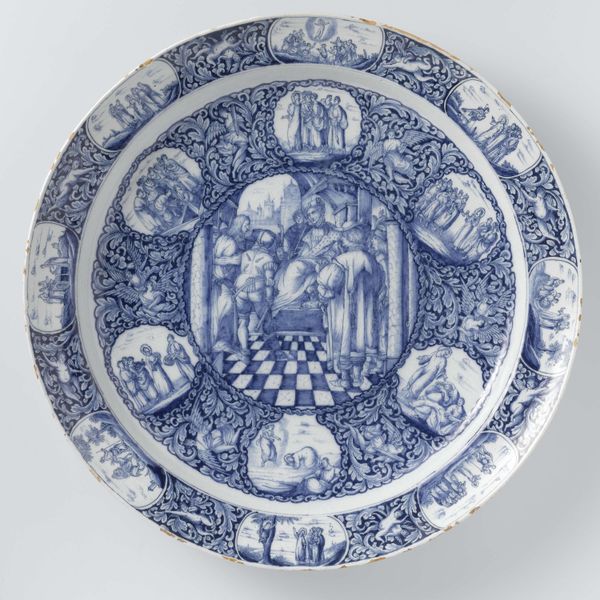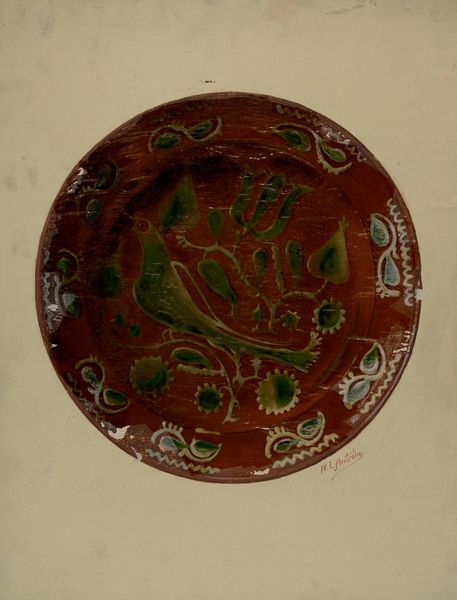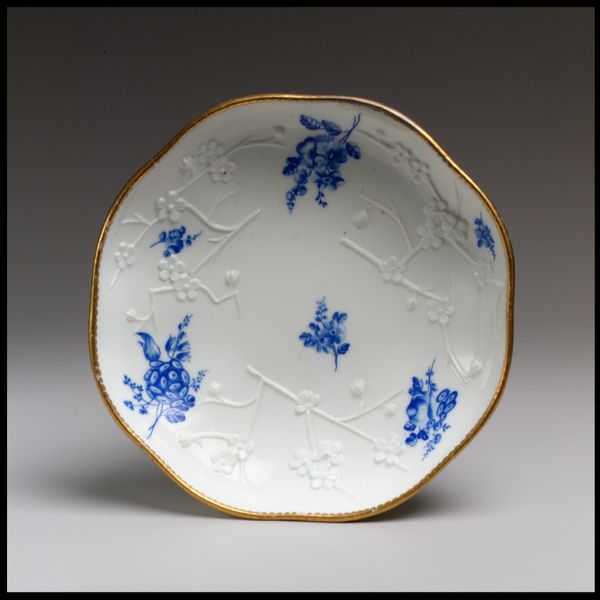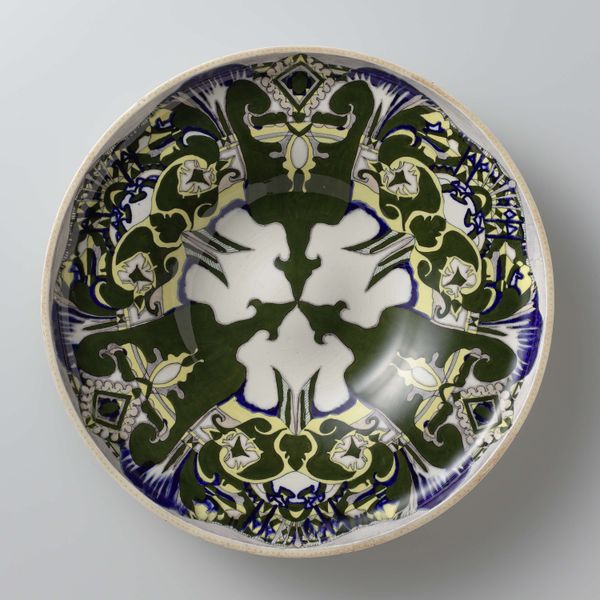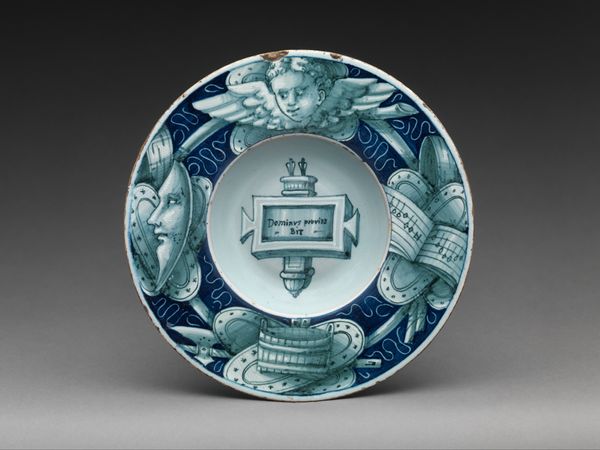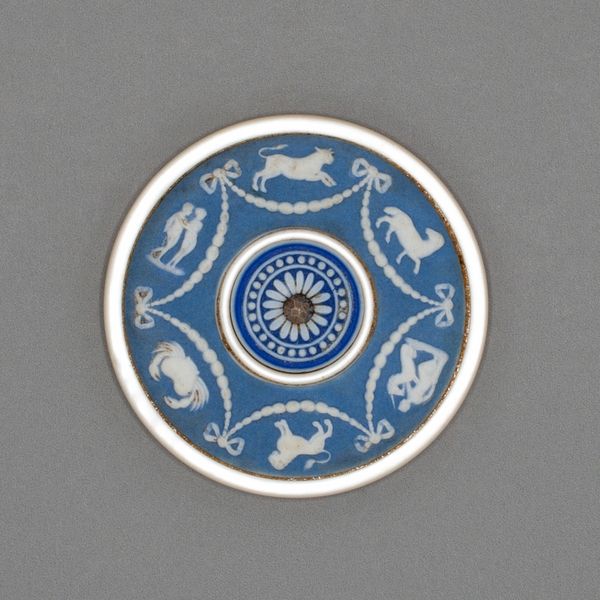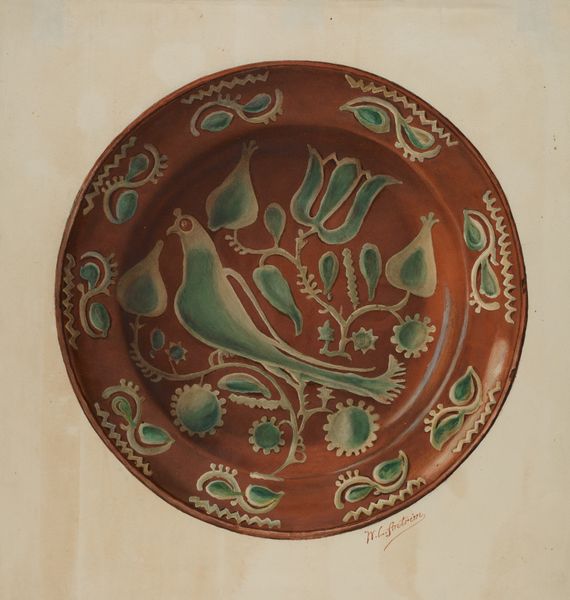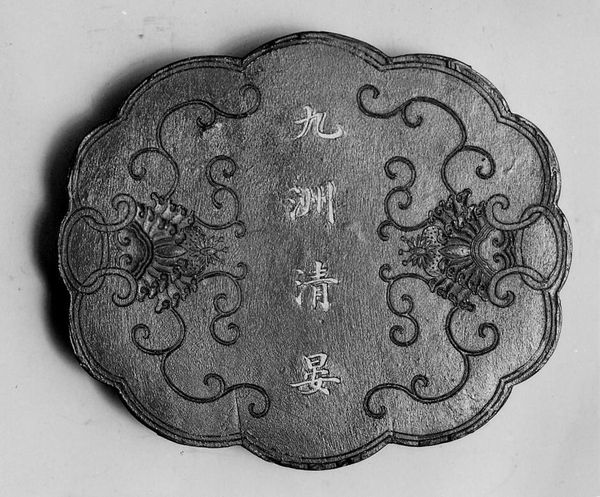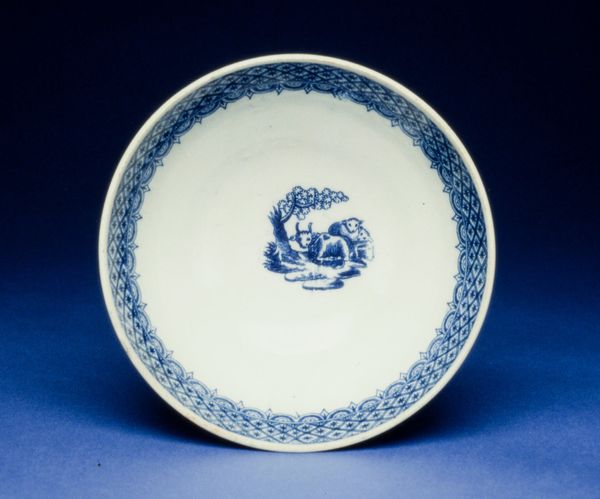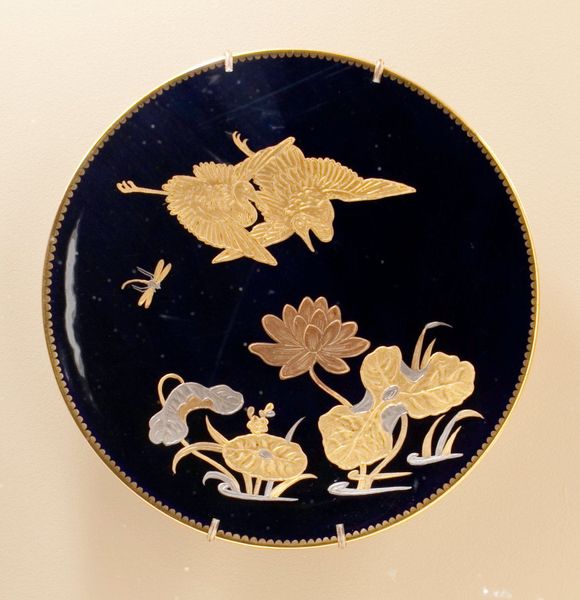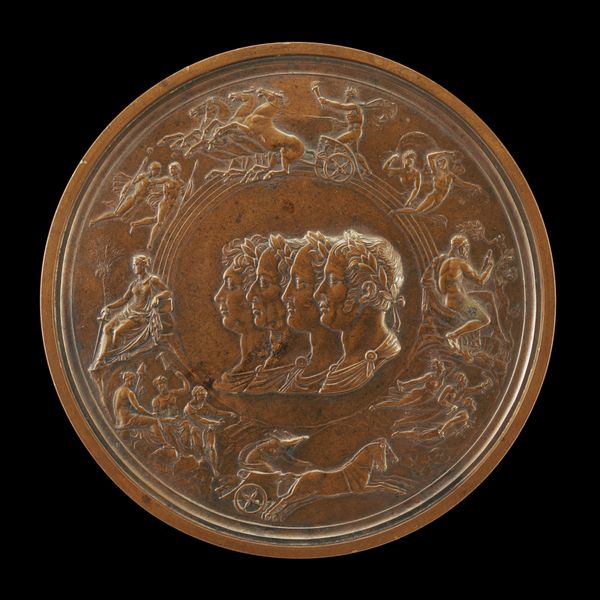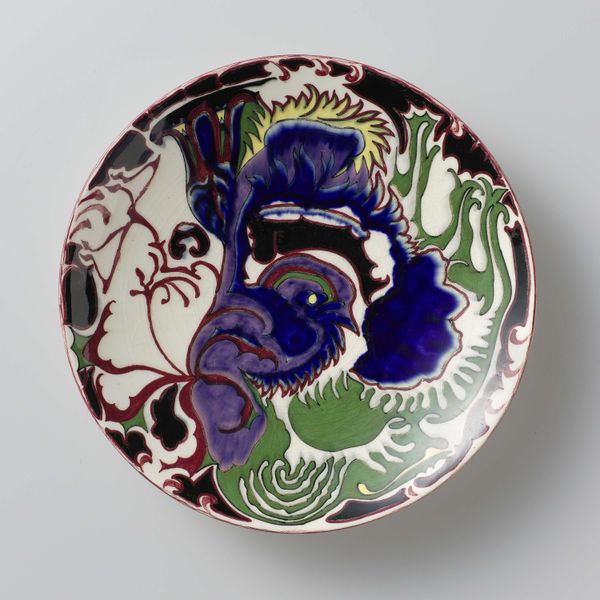
ceramic, earthenware
#
decorative element
#
ceramic
#
earthenware
#
england
#
ceramic
#
earthenware
#
decorative-art
#
decorative art
Dimensions: 1 1/8 x 8 15/16 x 8 15/16 in. (2.86 x 22.7 x 22.7 cm)
Copyright: Public Domain
Curator: Take a moment to consider this Plate, crafted around 1740 in England. The anonymous maker worked with earthenware and ceramic, producing this striking piece now housed at the Minneapolis Institute of Art. Editor: My initial impression is one of delicate balance. The central floral design contrasts beautifully with the darker outer ring, creating a layered visual experience, wouldn't you say? The blue against the earthen colors gives it such refinement. Curator: Absolutely, the composition relies on these contrasting colors. The materiality speaks volumes; imagine the hands that shaped the clay, mixed the pigments, and fired this object. This wasn't merely decoration; these earthenware plates played a significant role in social rituals and habits. Editor: True, but let’s focus on the formal elements for a moment. Note how the central white area, edged with a subtle floral trim, dominates. The six surrounding medallions with various flowers add an enchanting asymmetry, enriching the aesthetic appeal through that use of visual harmony. Curator: Don't dismiss the socioeconomic implications so quickly! Plates such as this reveal shifts in English society. The rising merchant class, and expanding trade routes, influenced styles and what families could display, didn't they? Objects became a show of access and aspirations. The maker responds to and likely depends upon these market forces. Editor: A valid point, of course, and how it functions in society can not be overlooked, I concede. Yet I cannot help returning to how effectively this ceramic captures a distinct elegance through line, color, and shape—that concentric balance from center to rim. The visual vocabulary elevates a common material. Curator: But it’s a dialogue between material and form and labor, a meeting of global style, perhaps attempting to replicate blue and white porcelain coming from China, and the English labor trying to emulate these goods in order to consume at increasing rates! The anonymous maker would have been embedded within very local economic conditions of class, labor, and workshops to complete this plate. Editor: A wonderfully multifaceted view. Focusing both on how materials communicate cultural context alongside composition is essential for a rounded interpretation. Curator: Yes, analyzing how cultural, economic factors shaped material culture alongside aesthetics helps unlock a richer understanding. It has been very fruitful to understand all the lives intertwined with this plate. Editor: Indeed, an interplay between maker, material, form, function and the user makes it far more rewarding, giving this everyday piece new profundity.
Comments
No comments
Be the first to comment and join the conversation on the ultimate creative platform.
